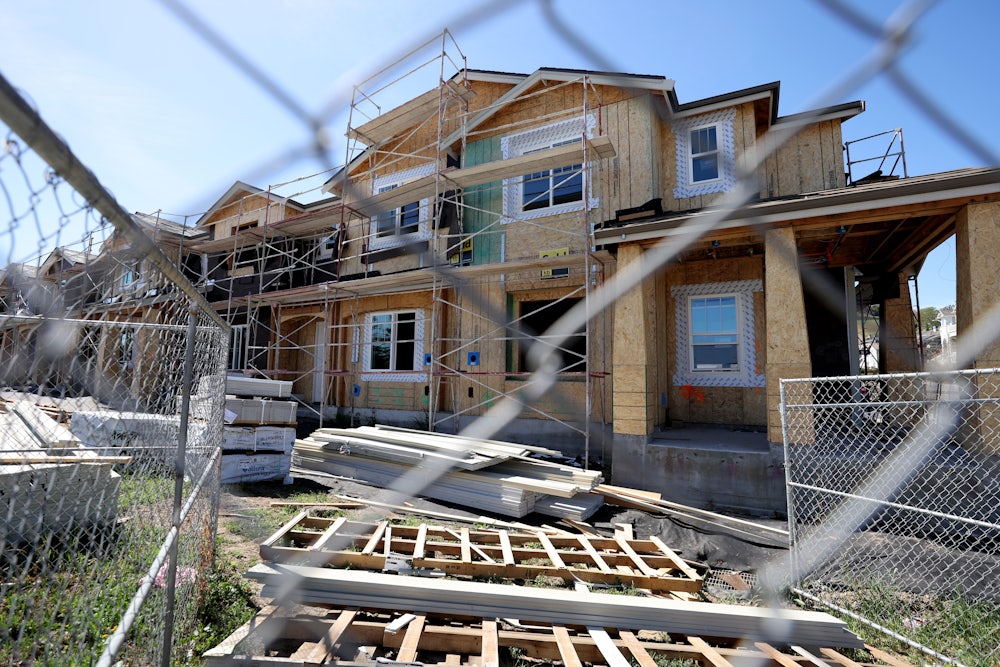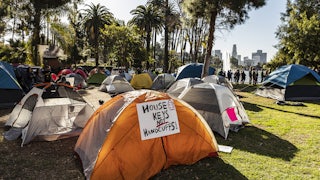The housing crisis is insane. None of its dysfunctions are exclusive to the United States, but the country has a talent for making them hideously manifest. In Oakland, Moms 4 Housing, a group of formerly homeless mothers of color, staged a protest over rising prices. For several months in 2019, they occupied a house owned by Wedgewood Properties, a local house-flipper that was holding it vacant to upgrade and sell. The company decided that the women had stolen the home. Sheriff’s deputies got involved, entering the property and arresting the women. The media descended, activists protested, and City Council members hurried to support the women. The injustice of mothers going homeless while blank-eyed speculators let perfectly good homes sit empty was hard to ignore.
To a certain class of planners, pundits, and policy hacks, the solution to the crisis is simple: Build more. The U.S., they note, is short 3.8 million units. “Once you accept the existence of a housing shortage, the obvious policy response is to build a bunch of homes,” policy reporter Jerusalem Demsas recently wrote at The Atlantic. Members of the YIMBY, or yes-in-my-backyard, movement demand more market-rate housing. “We can’t subsidize our way out of a shortage,” reads the website of Open New York, a leading YIMBY advocacy group. Even homelessness can be boiled down to a “supply-and-demand problem,” according to The New York Times. Increasing housing supply, the logic goes, would meet a swelling demand to live in high-cost American cities. Homes would become more affordable over time, in a sort of trickle-down economics for the fundamental human right of having a place to live.
Some experts, of course, are less hawkish on the idea that boosting corporate real estate is the best way to create more housing. For Vinit Mukhija, an urban planning professor at the University of California, Los Angeles, a central obstacle is America’s obsession with the single-family home. In Remaking the American Dream: The Informal and Formal Transformation of Single-Family Housing Cities, Mukhija shows how Los Angeles and other pricey urban areas, through both improvisation and policy, are adding to single-family lots, ultimately making more affordable housing available. But building more is not a panacea on its own. In fact, it can make the crisis worse without strong policies designed to help low-income people stay in affordable housing. In cities from Oakland to Atlanta to Minneapolis, decades of racial housing discrimination have combined with elite-oriented development strategies to create a reality where neighborhoods gentrify, investors profit, and vulnerable people suffer. Two other recent books, Red Hot City: Housing, Race, and Exclusion in Twenty-First Century Atlanta, by Georgia State urban studies professor Dan Immergluck, and Gentrification Is Inevitable and Other Lies, by Mount Allison University urban geography professor Leslie Kern, explain how that reality came about—and how we might disrupt it.
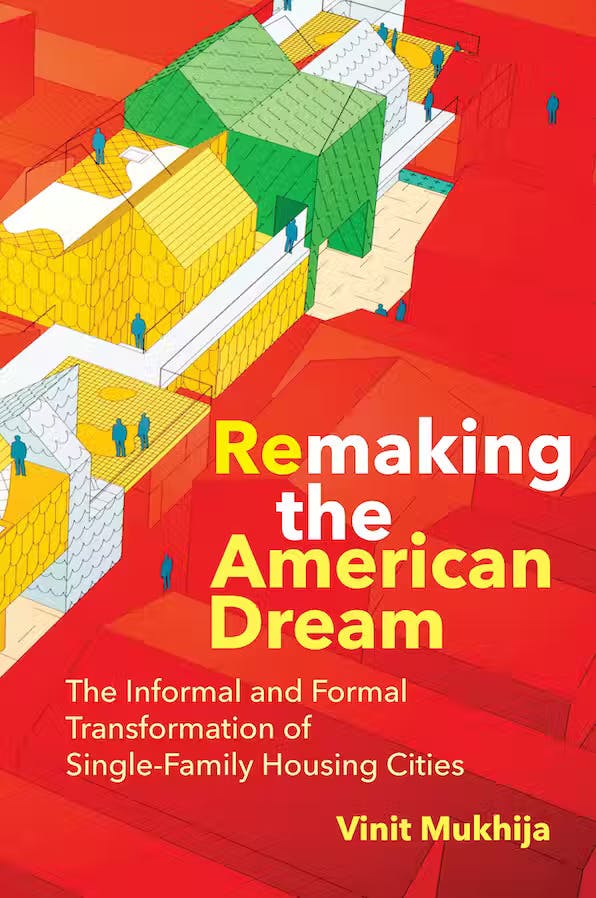
Housing supply has been severely limited by the ideology of the American dream, Mukhija maintains. Since at least the postwar era, the detached single-family home has “stubbornly” remained the ideal. No other nation provides such extravagant subsidies, tax benefits, and insurance options to promote it. But single-family living has consequences: It uses more land, costs more, and produces less housing than multifamily apartment complexes. Moreover, local governments have always used exclusionary single-family zoning to promote racial segregation, and homeowners, concerned over property values and “quality of life,” remain eager to block any changes to this practice.
California, where Mukhija centers his research, has been defined by the little boxes and lush lawns that government and lenders have pushed on the white middle class since the midcentury. In Los Angeles County, for example, single-family units make up over half of the housing stock. It’s no coincidence, then, that California suffers the worst housing crisis in the nation. The median home costs $800,000 compared to $450,000 nationwide. Half of tenants in California are cost burdened, spending more than 30 percent of their income on rent, and a quarter of those are extremely cost burdened, spending more than 50 percent. The state needs more cheap homes.
Cities expand upward in high-rises or outward in suburbs, but traditionally, it’s unthinkable to tamper with the sacred space of the family home. In the 1980s, even modest proposals of zoning reform were met with wild-eyed resistance. But today that’s beginning to change. Some cities are encouraging greater density by allowing residents to build more units on single-family lots. And even when cities don’t allow it, residents are doing it. Accessory dwelling units—called granny flats or in-law suites, garage apartments or simply second units—have become a way for homeowners to collect extra rent on their properties while also generating more low-cost housing. These changes, Mukhija writes, are “likely to remake the form and nature of U.S. cities.”
Most people associate “informal housing” with the global south: the slums of Mumbai, say, or the favelas of São Paulo. Mukhija, a scholar of housing in the developing world, stresses the “everyday prevalence of informality in Los Angeles and the affluent Global North.” He estimates around 50,000 unpermitted second units on single-family lots in Los Angeles alone, and over 200,000 nationwide. A quiet housing revolution is taking place. But if policymakers don’t adapt to the new construction, the changing market is likely to reproduce the same instability and abuse that poor tenants currently suffer.
Some cities are already meeting this transformation with relaxed regulations on second units. In the 2010s, Los Angeles city leaders and advocates started a pilot project making it easier to get permits and safer to build. Slowly, the city made it less onerous to bring informal housing up to code. Soon the state of California got involved, changing single-family zoning regulations to allow second units, third units, and duplexes. By 2018, such projects accounted for one-fifth of the city’s new housing permits. Other North American cities—Minneapolis; Seattle; Portland, Oregon; and Vancouver, Canada—have followed suit, relaxing restrictions on lot sizes, building setbacks, and height limits to allow more units per lot.
But can subdividing the American dream fix the problem of unaffordability? Mukhija concedes that the market alone is unlikely to “supply adequate, decent housing for low- or moderate-income households,” noting that scholars call for more public spending on affordable housing. That’s an important reminder for development hawks. After all, these days it’s easier to imagine homeowners turning backyard apartments into lucrative Airbnb rentals than accommodating low-income tenants. The housing shortage is only part of the picture, one that frankly favors the perspective of investors and landlords eager to turn a profit in a volatile market.
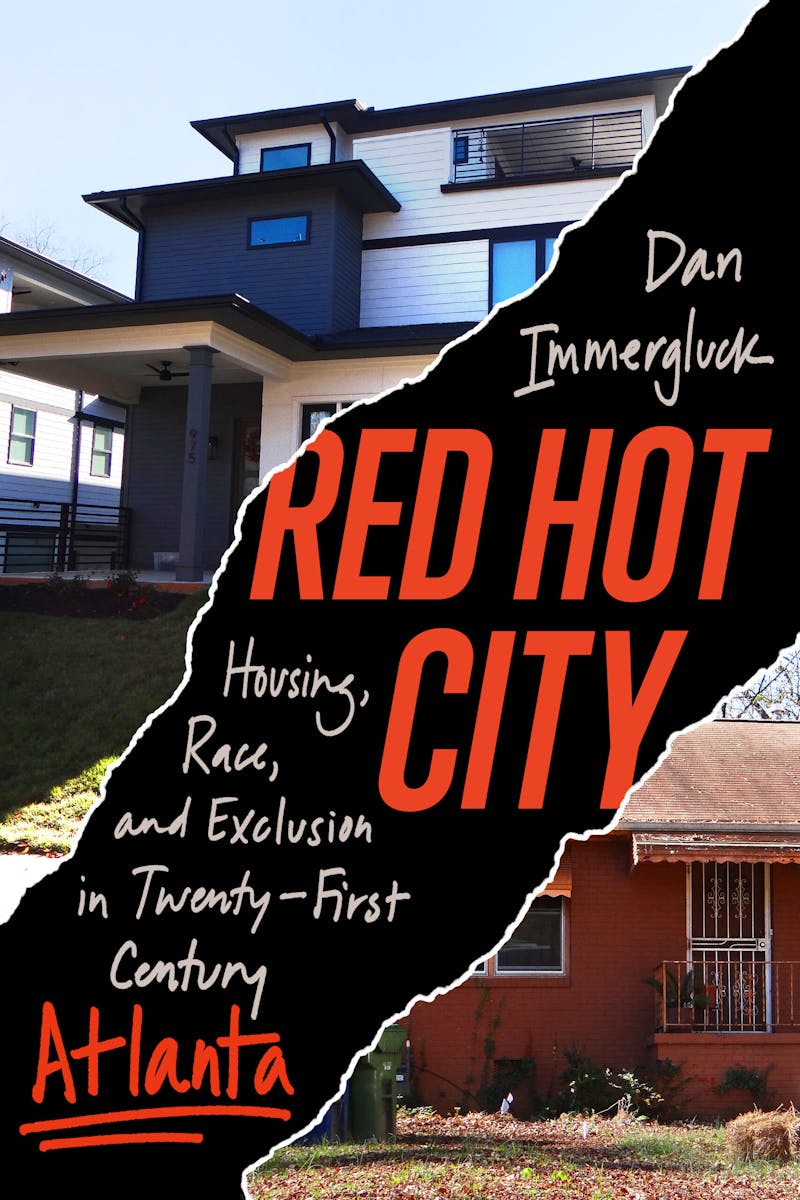
Housing exclusion is another part of the picture. Many cities are building, but new construction tends to prioritize the interests of elites while pushing out poor residents of color. That’s not an accident but a feature of the “growth-above-all development ethos” that animates urban planning, writes Dan Immergluck. In Red Hot City, he takes Atlanta as a case study to explain how gentrifying metropolitan areas foster racial inequality in housing. Redlined and segregated throughout the twentieth century, Atlanta has long suffered a stark racial wealth gap. In the postwar period, white residents and jobs sprawled into the suburbs, away from inner-city Black communities. The ’80s delivered a familiar process of fiscal austerity, Black removal, and “urban renewal” that revalorized the urban core and attracted affluent in-movers.
By the end of the century, city elites were angling to make Atlanta over as a “global city.” Immergluck enumerates a number of exclusionary steps along the way to this boosterish goal. To prepare for hosting the 1996 Olympics, for example, the city demolished huge tracts of public housing, “redeveloping” them through partnerships with private companies as mixed-income housing with far fewer units for very low-income households. Many poor Black residents were priced out of the metropolitan area. The early 2000s brought the launch of the Beltline, a $4.7 billion, 20-mile rail park similar to New York City’s High Line. For city leaders, Immergluck writes, the project represented “the promise of a major city-led public-private partnership, built on the back of expected rising property values, to reshape the city, both physically and demographically.” As of 2017, it had led to a sharp increase in home prices, a 76 percent decline in the Black population, and a 280 percent increase in the white population nearby.
Perhaps the best illustration of elite priorities is the city’s mismanagement of the 2007 foreclosure crisis. When the subprime mortgage market collapsed, Black neighborhoods suffered the bulk of Atlanta’s foreclosures. In 2012, as the market began to recover, the same neighborhoods became “strike zones” for private equity firms. With home values badly damaged, Immergluck argues, the city could have reserved foreclosed properties for long-term affordable housing or sold them to Black households at low prices. Instead, city leaders allowed loan servicers to sell those properties in bulk to Wall Street–backed firms like Blackstone seeking to profit from single-family rentals. The result was “a major transfer of tens of thousands of single-family homes from homeowners, including many families of color, to investors.”
Atlanta’s makeover succeeded in the lurid way that urban makeovers do. From 2000 to 2019, the metropolitan population swelled from four million to 6.1 million. Tech firms like Google and Honeywell crept into the region with high-paying jobs and $2 billion of venture capital. Housing demand drove prices up, high-cost rentals doubled, and low-cost rentals dropped by 20 percent. Black Atlantans were largely left out of this “renaissance.” Black homeownership fell, exacerbating the racial wealth gap. Housing instability and evictions in Black neighborhoods worsened post-crisis, driving Black residents into increasingly impoverished suburbs. Bold affordability proposals, like a $1 billion investment promised by Mayor Keisha Lance Bottoms, were drastically scaled back.
Immergluck attributes these problems to an Atlanta “corporate-led regime” that caters especially to real estate investors. Cities, he maintains, could instead create “inclusive, diverse spaces in which lower-income, primarily Black families could benefit more from growth.” But how that might be accomplished politically remains a burning question. If anything, Georgia is an example of how difficult it is to make housing affordable through legislation. The state is one of 37 whose legislatures have banned rent control altogether, and like many conservative state governments, it’s hostile to local attempts at enacting fair housing ordinances.
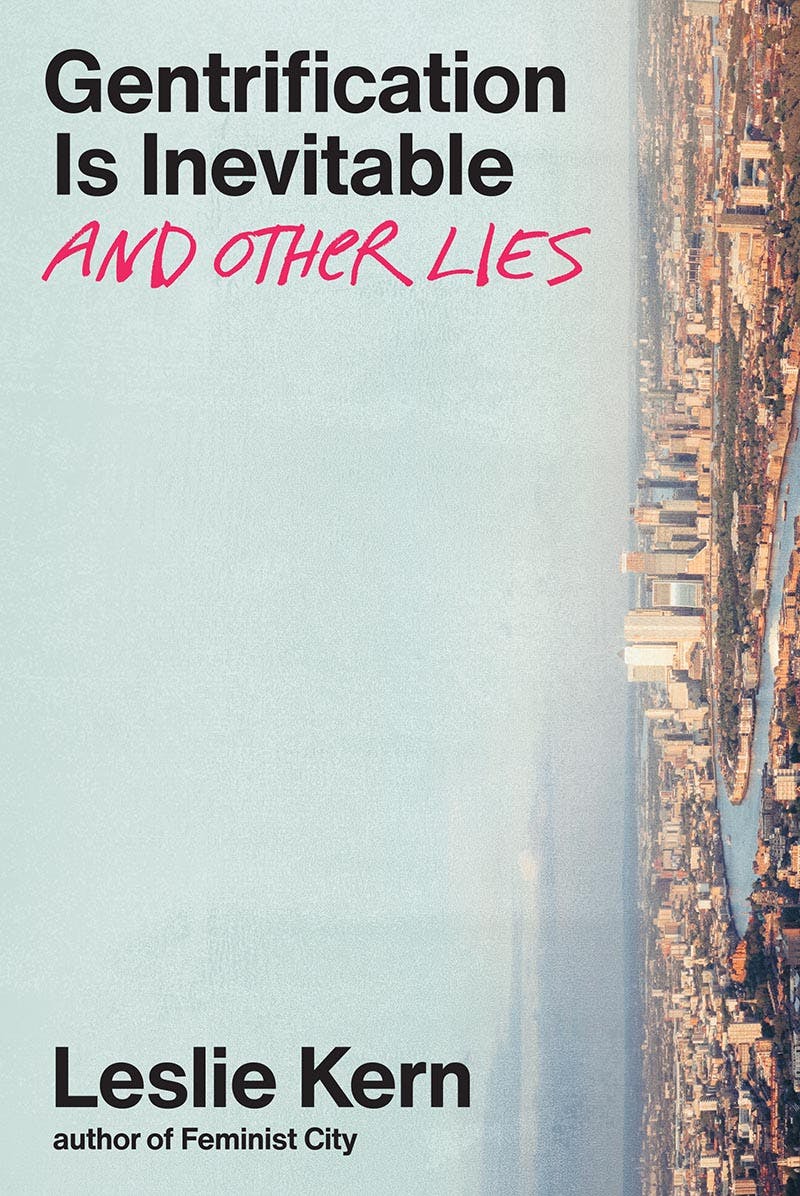
Policymaking that brings new housing without protecting current residents is the basic engine of gentrification. That term, coined in 1964 by London-based sociologist Ruth Glass, originally centered on class change: The middle-class “gentry” were returning to cities’ disfavored neighborhoods and pushing out the working poor. Neighborhood transformation is central to gentrification, Leslie Kern observes in Gentrification Is Inevitable and Other Lies, but the common stories we tell about the phenomenon are not nearly nuanced enough. The book examines the forces behind displacement in North America and beyond, arguing for an intersectional way of understanding gentrification, one that acknowledges the harms done to working people based not just on class but also on race, gender, and sexuality. The problem is vastly greater than the individual choices of the middle-class.
Having lived in London and Toronto, Kern has seen gentrification in action, and she documents a set of myths that confound our understanding of the process. For one thing, gentrification is not a “natural evolution” in the cycle of urban growth, as a ghoulish Guardian column once claimed. City governments pass policies that “deliberately scatter the poor and destroy informal housing in order to make space for the kinds of properties that will draw in wealthy investors,” Kern writes. Public housing projects are demolished and “renewed.” Old factories become chic crash pads for tech bros. Short-term rentals proliferate. Viewed in this light, cities aren’t changing “organically.” They’re actively eliminating people, their jobs, and their homes.
But isn’t neighborhood transformation also a product of changing cultural tastes? After all, urban planner Richard Florida famously observed that the “creative class” is attracted to neighborhoods that contain little treats like galleries, parks, and cafés. Not so fast, writes Kern. These days, gentrification tends to be a top-down process that starts when governments support rezoning and reinvestment. Nor is gentrification all about class. Racial segregation “shaped the flows of capital that enable gentrification.” Evictions are more likely to target women with children. Overpolicing of gentrifying neighborhoods means increased systemic abuse of queer people and trans women of color. Displacement of this kind is not exactly new. Gentrification today, Kern points out, continues a violent history of settler-colonial land grabs that dispossessed Indigenous people in order to build North American cities in the first place.
True enough. But what can we do with that knowledge? Changing the story alone won’t put people in affordable homes. That requires action, not just building new real estate but organizing to demand social housing and tenant protections. Kern’s book is most valuable as a compendium, however incomplete, of collective work that organizers have done to disrupt profiteering, prevent evictions, and preserve affordability.
In Oakland, Moms 4 Housing won an unexpected victory. Wedgewood Properties, apparently motivated by the desire not to appear evil, agreed to sell the home at market rate to the city’s community land trust, a nonprofit that creates permanently affordable housing for low-income buyers. The mothers were allowed to stay, Kern reports, and the flipping company offered to sell the land trust some 50 additional properties. Legislative and regulatory wins can also help slow the onslaught of gentrification. In Detroit, for example, activists won a community benefit agreement mandating that developers include public goods like low-cost housing, jobs, and green space as part of new development packages. San Francisco and Toronto both passed regulations on short-term rentals. Vancouver created a tax on vacant investment properties.
Other recent policy changes, unmentioned by Kern, demonstrate the practical potential of collective action. In 2019, a pressure campaign by the New York State tenant coalition Housing Justice for All won a sweeping package of state laws that help regulate rents and prevent evictions, defeating deep-pocketed real estate lobbyists. That same year, the Kansas City advocacy group KC Tenants organized local renters to gain a citywide tenant bill of rights.
Given the scale the housing crisis today, these victories might seem marginal. None of them, it’s fair to say, is nearly sufficient to upend what urban geographer Samuel Stein has called “the real estate state,” that bloated alliance through which our elected representatives serve corporate property owners far better than they serve anyone else. The noxious result of that alliance is not the American dream, by any average person’s standards, but the fever dream of American elites. Any successful refusal of real estate interests forms a wake-up call, an insistence that fighting for outcomes beyond rampant building and limitless price hikes can work. “The truth is that no one is going to hand us the gentrification-proof city we want,” Kern writes. “We have to imagine it, we have to believe in it, and we have to do it.”
From where we stand, it may be hard to picture a city that provides safe, affordable housing for everyone who needs it. But the insanity of the housing market is a reflection of the country itself, and one reason for hope is that it’s even harder to picture the greed, scarcity, and exclusion of our current system continuing unchallenged.
